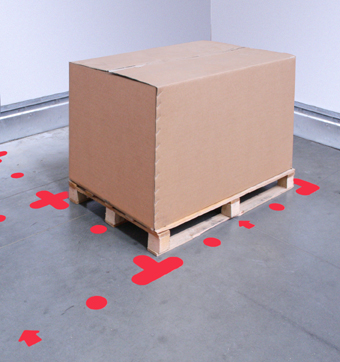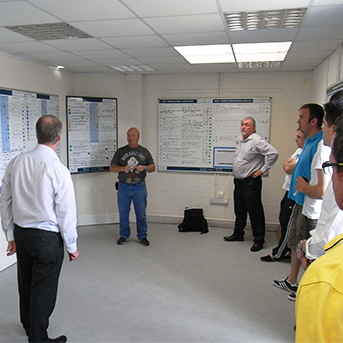Poetry In Motion – Lean Lessons From Pit Stop Perfection
 By
Alana Graham
·
10 minute read
By
Alana Graham
·
10 minute read
Pit Stop Perfection!
Pit stops are a fundamental part of racing. F1 cars are capable of travelling at up to 370 km/h and need to have their tyres changed, engines checked and fuel added to be able to deliver and maintain this speed throughout the race – this is what pit stops are all about!
Watch how the team gracefully manage to pull off the incredible 1.92-second pit stop in the video below:
Fundamentally, the key to this exceptional performance is teamwork. Everybody involved knows the goal and they are all engaged and actively working towards it. The hard work of these exceptional individuals can easily go unnoticed, but as Formula One themselves point out:
“If only one of the 20-something of those people—including the driver—are off by a few centimeters, a whole race and weeks of work can be destroyed.”
There are a number of Lean principles that come into play when executing the perfect pit stop – but before we dive into that, let’s take a moment to look briefly at the roles of those in an F1 pit crew:
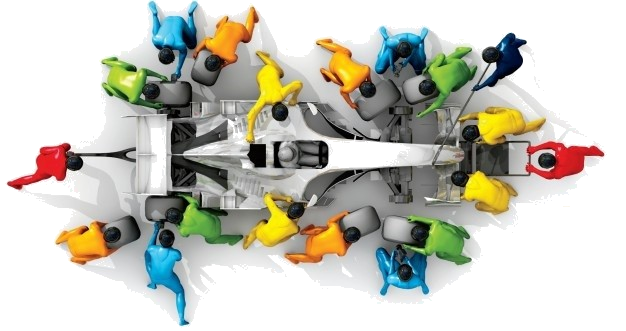
Changing the tyres…
The blue, green and orange team members are all focussed on one overall mission: changing their tyre as quickly and efficiently as possible. Blue’s are responsible for the wheel gun and to loosen the old tyre and tighten the new one. Greens remove the old tyre once blue has loosened it before orange comes in with the new tyre before blue once again is called upon to finally tighten the new wheel before the race.
The whole sequence works like this:
- Blue – loosens the old tyre
- Green – removes the old tyre
- Orange – puts on the new tyre
- Blue – tightens the new tyre
Let’s take another look at exactly how this looks when completed in under 2-seconds:
Keeping the car stable…
The stability of the car is ensured by the four yellow members of the pit crew team. Two team members stand at the sides of the car and as soon as the driver is in the correct position, they step forward to ensure that it’s perfectly stable so the other team members can carry out their jobs. The other two yellows stand at the front of the car and contribute to keeping everything steady.
Lifting the car…
The two reds are responsible for lifting the car up to enable everyone else to do their job! As soon as the car pulls into the position they have to be lightning quick when it comes to jacking up the vehicle as all the rest of the work starts and ends with them! The red at the front of the car has the daunting task of being ready and in position as the car enters the pit, sometimes as fast as 300 km/h! This is a fine example of having trust in your team. Without this confidence, a fully cohesive team cannot be built and there will be wasted time in discussion, checking etc.
An engaged team, aligned to a common goal and without waste
Employee Engagement is something we talk about a lot. It’s such an important consideration for every workplace and, research has proven that disengaged team members cost your business serious money! In the Pit Stop Perfection video, every single member of the team knows not only what they need to do, but how they are supposed to do it and how it jigsaws with the work of the other members of the team.
The fundamental principle of Lean and continuous improvement is that non-value added work and waste are to be continuously eliminated – what we see in this video is the result of careful and considered continuous improvement. All the activities in this process that did not directly add value to the final product have been eliminated and streamlined to the point where every single person adds value in their task and is essential to the overall goal!
Let’s think about the eight wastes (TIM WOODS) and how it applies to this process. In the pit stop cell, there isn’t any transportation and the pit crew don’t have a single centimetre of extra movement. It has taken years of careful design and hundreds, if not thousands, of hours of continuous improvement work over the entire course of racing history to refine this process to what we see today. All this time has taught designers how to remove all the non-value-added steps to ensure the process is as effective as it possibly can be. There is no chance for over-processing and certainly no waiting time for other parts of the process to be completed. One of the most fundamental aspects is that all the operators you see have to work with a zero-defect mentality. The team have one chance at it and it must deliver results perfectly, to win the race, but to also ensure the safety of their driver, and others on the track!
Harmony and flow creating ‘poetry in motion’…
Processes that are truly Lean are based on flow. To achieve flow, it’s essential to have a continuous improvement mindset because you need to identify and design the best way of work for the operators completing the task – you then work as a team to continuously refine the process! In the example video, it’s the pit crew who are responsible for changing the tyres (green and orange in the diagram) who we’ll focus on next.
Their position and the dynamic of their work minimises the need for extra space and movement. Take a look at the picture below and note the distance between the old tyre being removed and the new tyre attached. They are able to complete this task using the minimum amount of space possible and this task is practised to perfection and always done to time. The crew work to a specific time and have a pre-designed movement pattern that has been calculated with exactly the right timing and targeting to ensure they hit their mark every time – remember what we said earlier, they have to have a zero-defect mentality!
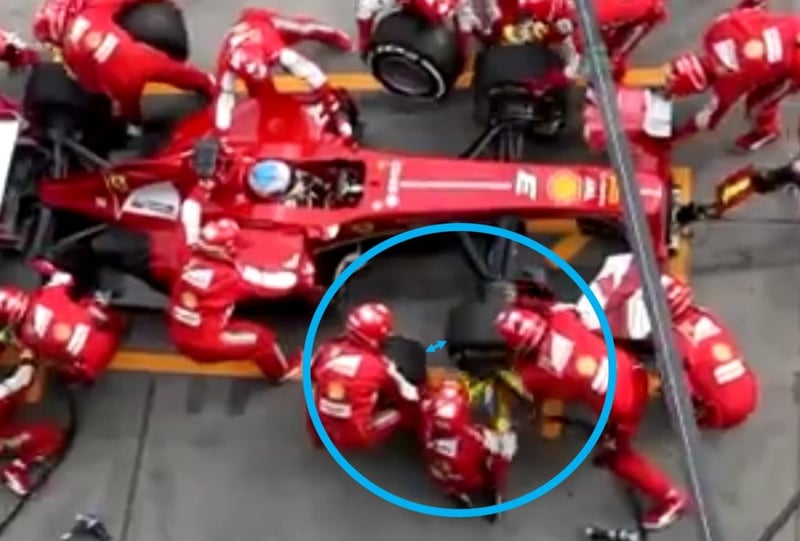
Alongside flow is the ability for the ‘operators’ (those in the pit crew) to “hit the ground running” – this is clearly evident in the posture of the crew, even before the car arrives at the pit stop. Take a look at the picture below, taken of a different F1 pit crew:
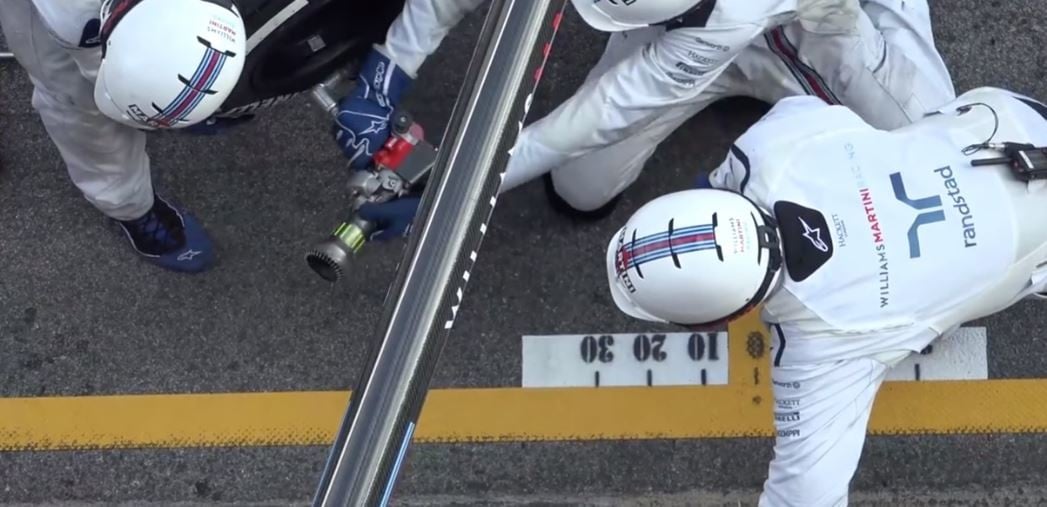
Take a look carefully at the position of the gun. Even before the car arrives they are stretching their hand and pointing the gun towards the car. As the car approaches, he moves his hand with it and follows the movement of the wheel as it pulls in. The crew member wants to be ready for action and timing is everything. In fact, in slow motion footage of the tyre change, you can clearly see that the operator holding the gun is actually touching the nut of the wheel before it’s even come to a complete stop.
It’s also worth taking a careful look at where the crew are looking – they are all paying attention to where the car is coming from. They have turned their heads to look in the right direction to ensure they’re in the best position and, are themselves, ready for action.
The importance of standardised work
Standard Operating Procedures (SOPs) and standardised work, in general, is essential for the effective running of a process. Basically, once you have found the best way of working; including positions, movements and performance – it’s time to standardise it so that you are able to deliver the same results every time (to ensure consistency for your customers!).
When we’re talking about your Lean journey – the road to Operational Excellence begins with stability and standard work – in the Pit Stop Perfection video, there are many examples of how this process has been carefully standardised. Pay close attention to how visualisation comes into play here… but we’ll discuss this later on in this post:

Just take a look at the team as the car approaches. Not only do to the pit crew know exactly what they are supposed to do, but they know exactly how to do it. The fundamental consideration here is that it’s the how that fundamentally affects both time and quality. In the pit stop, the team know that timing is everything and it’s because of this that they have developed the one best way of completing the task that has been tested, analysed and improved time after time by the members of the team. You’ll notice that they know where to stand, what posture to adopt, where the tools need to be – this is all the result of careful rehearsal and improvement after improvement!
There’s no doubt in our mind that although this performance is breathtaking, they will all have come away from it thinking about ways to improve it and make things even better.
Operational excellence through visualisation
Visualisation is a fundamental cornerstone of Operational Excellence. Everyone in a workplace needs to be able to know how their performance is tracking compared to the target and know when it’s time to take action, it’s that simple.
That’s right – every-single-person!
All this information needs to be easily understood and it’s even more vital that it’s easily accessible.
In the Pit Stop Perfection example, visualisation is used as a communication tool between the pit crew and the driver:
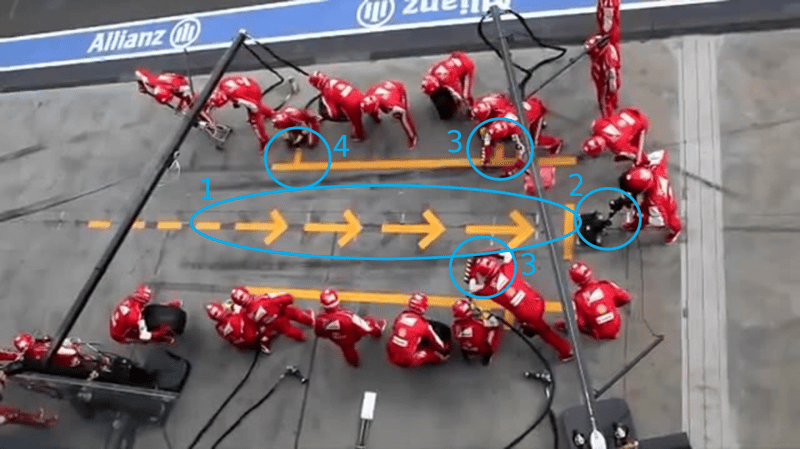
We must remember in all of this finely tuned process, that it only works when the driver stops the vehicle perfectly in the designated place. Communication between the driver and the pit crew is paramount. Let’s explore the various visualisation techniques used by the pit crew team:
1. Clear markings to help the driver with breaking
2. STOP point clearly communicated to the driver
3. Pit crew team members wear stop guides on their sleeves
4. Visual markings to indicate exactly where the centre of the wheels need to be
Let’s take a look at what all that visualisation looks like from the point of view of the driver:
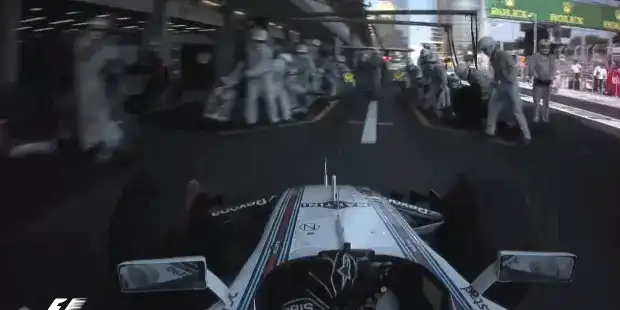
Notice the lines on the ground – this is to ensure that the driver knows exactly where they need to be centred and, as mentioned above – see the stop signs on the wrists of the pit crew removing the old tyres. All these signals help to give the driver the entire picture of where they need to be to ensure that they are in total harmony with the rest of the team, it’s all about expectation.
The eagle-eyed amongst you will also see the ‘Lollypop’, this is the overhead light that’s currently illuminated red. The red light means that the driver must remain stopped in the pit – the second that the light turns green, the work is finished and the driver can move on. A red-green signal is amongst the most basic that we can adopt in visual management but, as shown above, is one of the most easily understood and effective.

The importance of enabling a successful team with the right tools…
It’s a sad fact that, all too often, business leaders focus too much on what the team needs to achieve but pay too little attention to the factors that enable the team to be successful and deliver the end result. Truly Lean organisations take a holistic view to ensure that the team needs to have in place to be able to deliver and identify what systems and context are in place to empower teams to be successful.
Think of it this way – if you have 2 seconds to deliver a result, everything comes into play. 2 seconds to loosen a tyre and fasten a new one means that the quality of the tools is of the utmost importance. It’s the same in any process – you cannot ignore the fact that you need to give people the right tools and empower them to do their best to deliver the desired result.
The tools themselves can also be vital areas for improvement and you can drastically improve the process by optimising the tools involved. An example from the Pit Stop Perfection video is that the jacks that are used to lift the cars have gone through years of continuous improvement to ensure they are up to performance. They have a flexible handle which allows the operator to stand on one side of the car whilst the jack is in use and has a modified release handle that completely releases the jack so time isn’t wasted in waiting for the car to be gradually lowered. All of these factors save time to ensure the process isn’t waiting on one constraint.
Perhaps the most obviously important tool in this entire process is the wheel gun. Yes, it has to be robust and durable but the most important thing that comes into play in this time-critical process is Poka Yoke, the principle of error-proofing.

In 2 seconds, there’s no time for adjustments, tweaks or fittings. In 2 seconds you put the gun on the nut and it simply has to work, first time and every time. This has been the work of extensive research, development and improvements all with the aim of making sure that it performs perfectly in those 2 crucial seconds.
Also – there is literally no time for the crew member to have to decide or control the settings for the gun such as adjusting the torque…etc. The tool has to be standardised to work with one-touch and be as easy as possible for the operator to use in the little time they have. In short – the tool needs to work without adjustment and with one-touch!
Concluding thoughts…
There’s no doubt that what we see in the Pit Stop Perfection video is breathtaking, but what we find just as impressive is the sheer amount of hard work and improvement has gone into making sure that in those crucial 2-seconds, everything goes to plan.
We’ve explored the crucial Lean principles that make such an impressive feat possible and how you can start thinking about applying them in your own organisation.
Do you find F1 pit stops as fascinating as we do?
How do you apply the principles we’ve discussed in this post within your own organisation?
Leave a comment with your thoughts below and enrich the conversation!

Clarity Visual Management, making Lean work…
Here at Clarity Visual Management, we consult with clients both far and wide about how they can use visual management to achieve their goals, exceed their targets and make financial savings which would otherwise be lost to waste. We work with our clients to create a bespoke strategy that ensures visual management is set up for success before providing specific, high-quality Lean products to sustain the visual management programme and make Lean work in the organisation long-term.
You can read more about the work we’ve undertaken with our clients by browsing through our Visual Management Case Studies.
Download our ‘Introduction to Clarity Visual Management’ if you’re unfamiliar with Clarity and want to learn a little more about our products and services.
Further reading on the Clarity Blog:
- The Benefits of Lean Visual Management: Better understand visual management and why it’s essential for your business.
- A Visual Management Definition You Can Rely On: Do you truly know what visual management is all about? Read our definitive definition.
- Walk Out Wednesday – Management By Wandering Around (MBWA): Expert help if you’re a leader looking to keep a finger on the pulse of the business.
- Assessing Goals and Auditing Strategies: Having goals is essential. But, without a way to monitor and evaluate their progress are you doomed to fail?
- Kaizen Events – C.I’s Secret Weapon: Discover how Kaizen Events can unleash Lean and ensure improvement in your workplace!
- A Taste of Our 8 Practical Tips for Successful Visual Management: Get the ultimate guide to implementing successful visual management…
- Understanding Employee Engagement: Want a more engaged, productive and motivated workforce? Read our guide to employee engagement.
- Management By Wandering Around vs. Gemba Walks (Definitive Guide): Do you know the important difference between these key techniques?
- Why Workplace Communication Fails (and How To Improve It): Communication is essential for every part of life, so why are we are we so bad at it?
- Developing an Effective Standard Operating Procedure (SOP): SOPs are vital for every organisation, are you using them to their fullest potential?
- 5S Success with Clarity 5S Cleaning Stations: 5S is often the start of your Lean journey, set yourself up for success with the right, engaging tools…
Tags: Benefits, Lean, Manufacturing, Staff Engagement, The Clarity Team, Visual Management,

